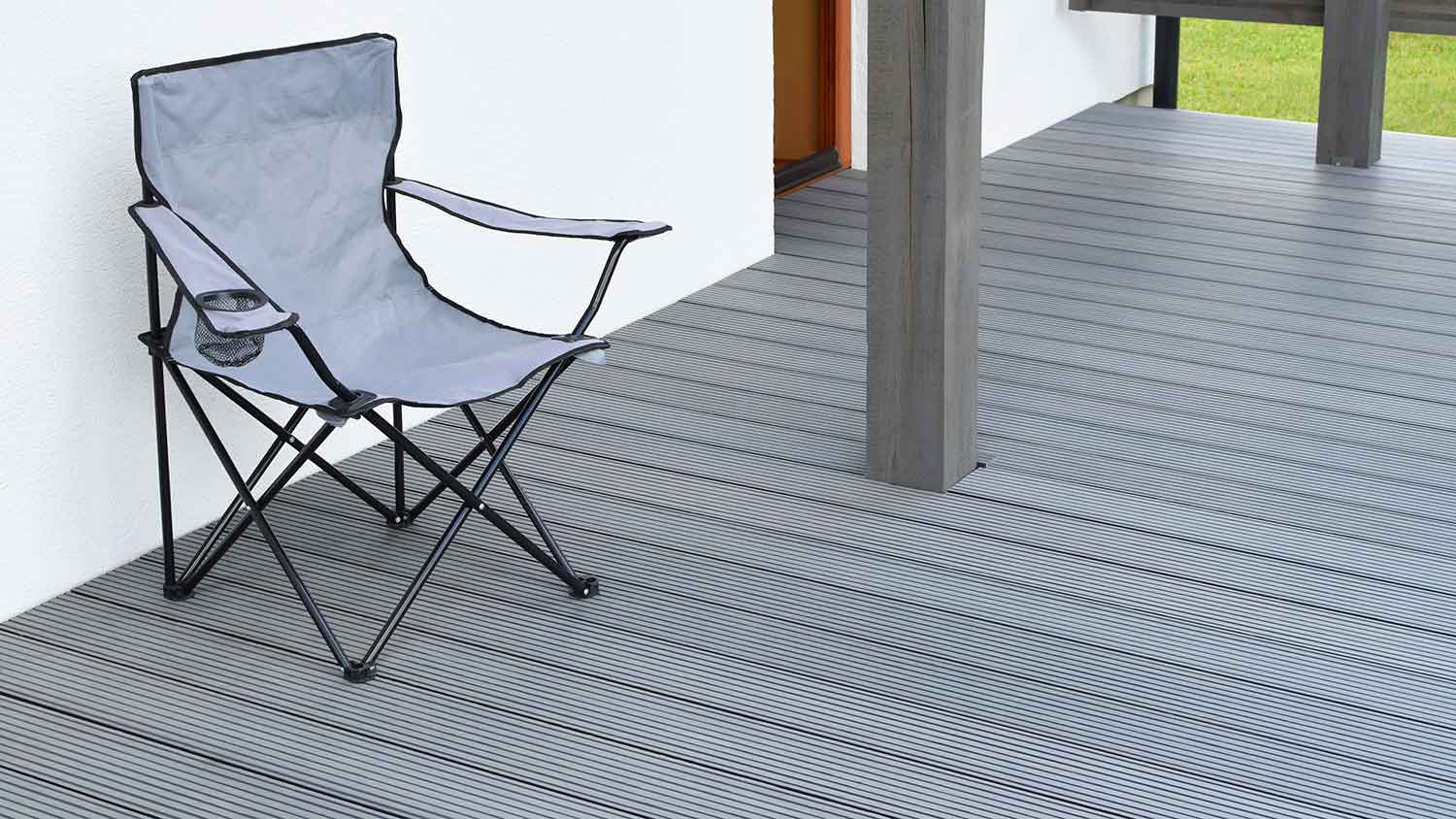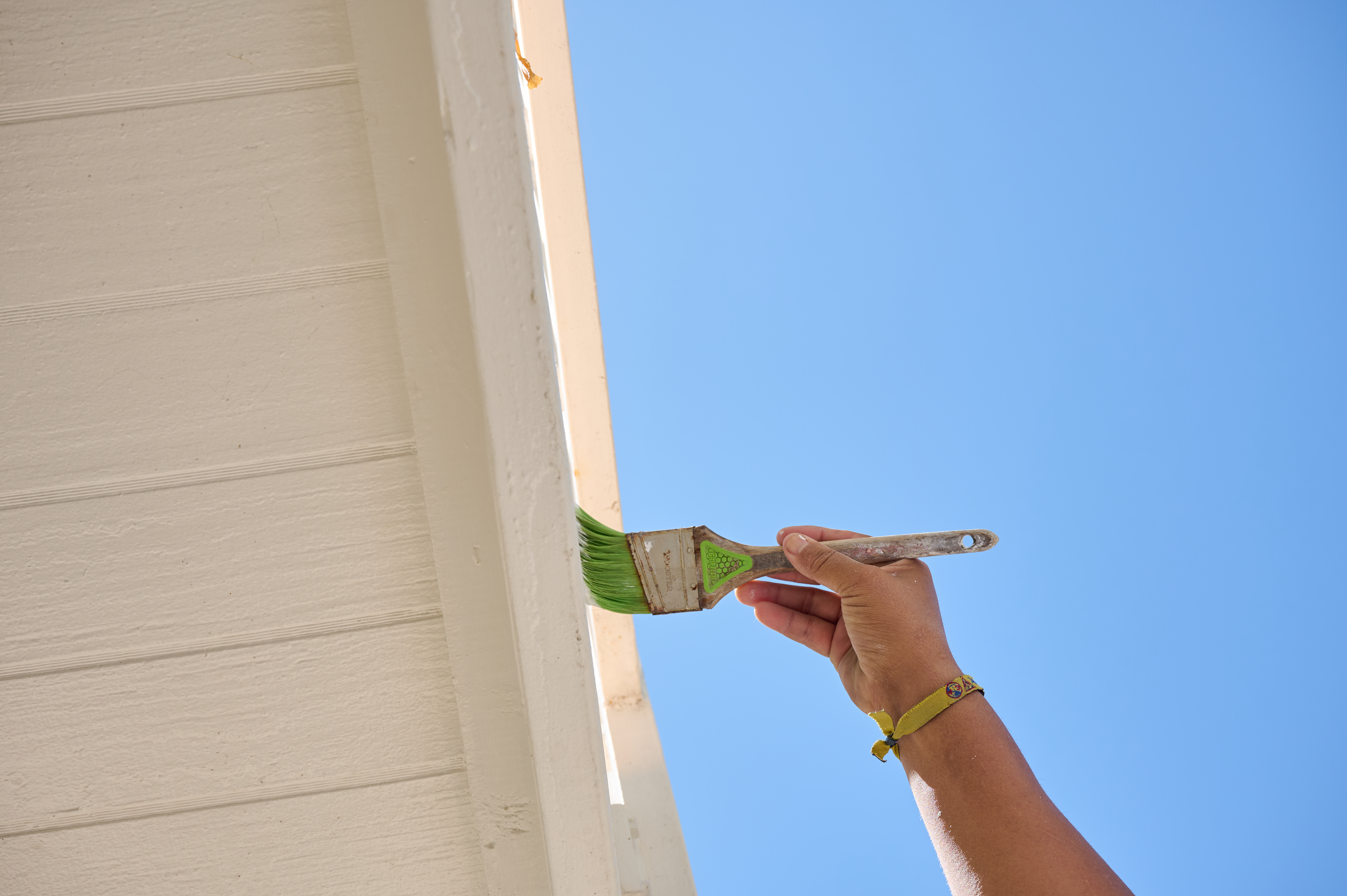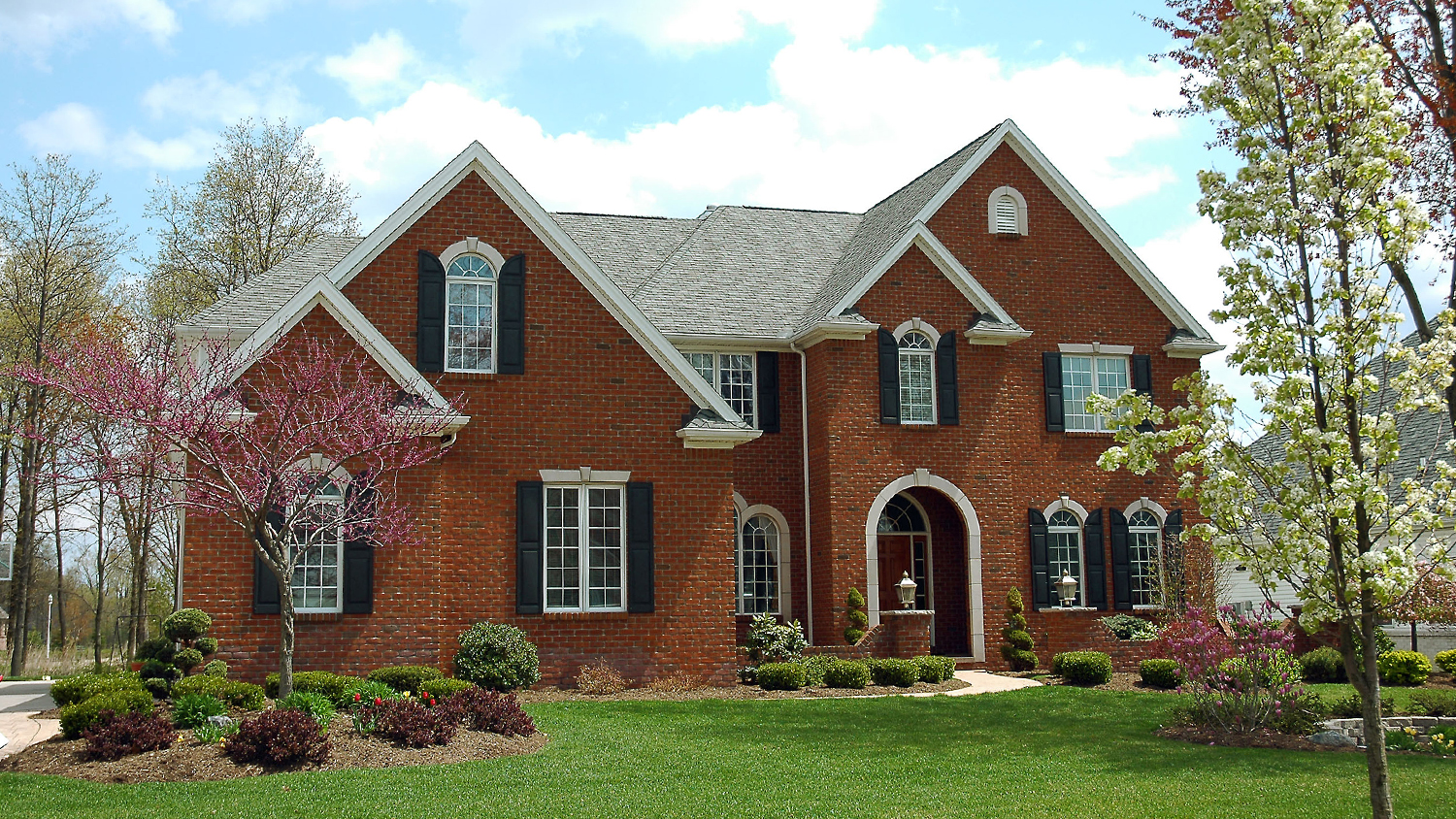
The cost to paint vinyl siding depends on the type of paint, square footage, labor, and more. Check out this guide to help you budget for painting vinyl siding.
Even if you can, that doesn't mean you should


Trex is a brand that manufactures low-maintenance composite decking.
Trex decking doesn’t need to be sealed or painted.
You might extend the life span of older Trex decking with a coat of paint.
Painting a newer Trex deck can trap moisture in the boards and cause damage.
Know the age of your decking and avoid certain paint colors if considering painting.
Whether your Trex deck is old or you simply want to change its look, you may wonder if you can paint Trex decking. Trex is low-maintenance by design, and paint, stain, or sealant can remove that benefit and create a lot of extra work. Plus, only older Trex products can safely hold a coat of paint, so tread carefully and read on about whether you can paint your Trex decking before you try.

Trex is just one of several brands that manufacture composite decking, a mixture of recycled wood fibers, plastic, and a binding agent. The result of this mixture is a hybrid product that's denser, stronger, and heavier than wood alone.
Composite decking like Trex has several advantages over traditional wood:
It's lower maintenance and doesn't need to be sealed or painted.
It comes with an extended warranty.
It's made of recycled plastic that would otherwise end up in landfills.
You can paint Trex decking, but there's a catch. Only some Trex decks withstand painting, and it depends on the age of your Trex product.
Only certain early-generation Trex products can be painted or stained. The table below breaks down which products can and can’t be painted:
| Can Be Painted or Stained | Can’t Be Painted or Stained |
|---|---|
| Trex Accents | Trex Select* |
| Trex Origins | Trex Transcend* |
| Trex Profiles | Trex Enhance* |
| Trex Brasilia | Trex decking manufactured after 2014 |
| Trex Contours | |
| Trex Designer (railing only) | |
| Trex Traditional (railing only) |
*The top surface can’t be painted or stained, but the ends and underside can be stained. Additionally, the railing can be painted, but only if the original railing color is white.
Trex stopped manufacturing its early-generation products in 2014 when it came out with a new, high-performance material. These early-generation Trex products are subject to fading after 12 weeks. After this occurs, the decking can be painted or stained.

The surface of newer Trex decking products shouldn’t be painted. Paint can trap moisture inside the composite material, causing it to split or crack. These products can be stained underneath, but it isn’t necessary.
Early-generation Trex decking can take paint or stain. However, once you apply paint to a composite material, the decking will require additional maintenance, similar to wood. Needing a new coat of paint every few years defeats the purpose of maintenance-free composite decking.
You may want to paint older Trex decking if it's no longer under warranty. Paint or stain may help extend your deck's lifespan by a few more years, but it's only a temporary solution. Eventually, the deck will require replacement.
The best type of paint to use on composite decking is exterior latex acrylic paint. Exterior paint is required to handle the outdoor elements. You can use an oil-based or water-based paint, but water-based paints are prone to flaking and peeling unless properly sealed. Before painting, you must apply a fast-drying acrylic latex primer as a base coat.
Avoid darker paint colors such as black, brown, or forest green. These tend to draw excessive heat from the sun, which can damage the decking material beneath.
If you know the age of your Trex decking and you're sure it's safe to paint, follow these tips before starting your project:
Rough up your decking boards with 240-grit sandpaper to increase paint adhesion.
Thoroughly clean your deck and let it dry before painting.
The best time to stain a deck is on a warm, dry day for speedier drying.
Avoid painting under direct sunlight to avoid an unwanted sheen.
Use a thin coat of paint to preserve the wood grain design.
If using water-based paint, seal or varnish the surface after it completely dries.
The average cost to paint a deck ranges from $500 to $2,000, or $2 to $5 per square foot. It’s not just the size of your deck that influences how much it costs. The type and quality of paint and the amount of prep work required also affect the cost. For example, do you need to strip an old coat of paint or power wash a dirty deck first?
Painting Trex decking is a job most handy homeowners can tackle, and you can make big savings by doing it yourself. If you already have the tools, time, and skills to complete the job, you might only have to pay for the paint, which ranges from $40 to $90 per gallon.
However, if you choose the wrong paint, cover a Trex surface that isn’t designed for painting, or don’t do the proper prep work, you could end up having to shell out for a deck painter near you to come in to remedy your mistakes.
From average costs to expert advice, get all the answers you need to get your job done.

The cost to paint vinyl siding depends on the type of paint, square footage, labor, and more. Check out this guide to help you budget for painting vinyl siding.

Painting your gutters can give your home the fresh finishing touch it needs to look its best. This guide walks you through the cost to paint gutters.

Powder coating can give your furniture, car, and other objects a new look. Learn what powder coating costs by object, size, and other factors with this guide.

The wood stain you choose impacts the look and longevity of your deck, fence, or wood furniture. Learn about the best types of stains depending on your project.

Learn how to stain a deck the right way by following our step-by-step guide. Read on to discover how to enhance and protect your deck.

Find out who to hire for exterior shutter repair, who can repair shutters, and when to call a professional. Get expert guidance.